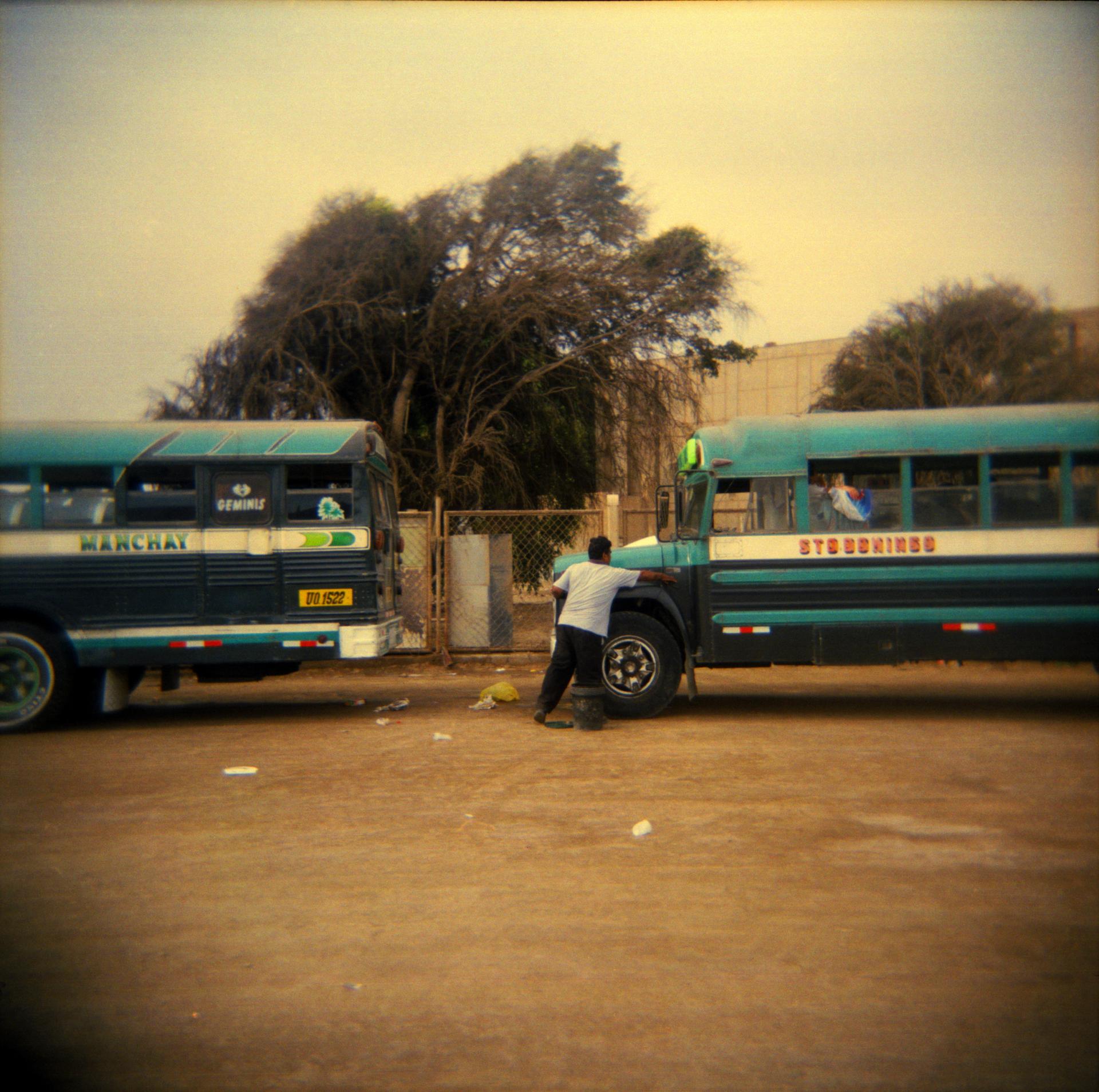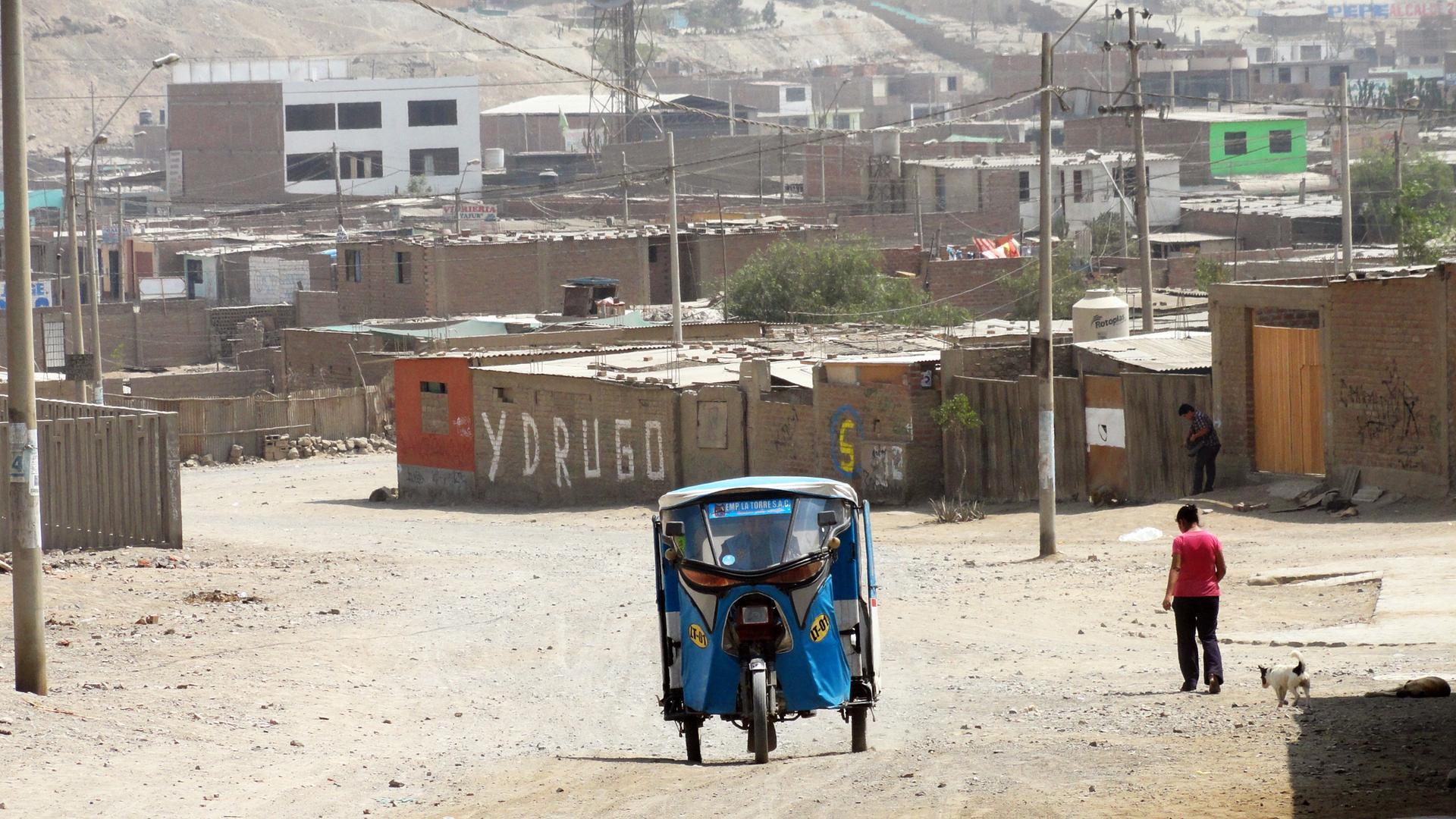Public transport? That’s something to protest outside Peru’s capital
A taxi in a suburb of Lima
Residents southwest of Peru's capital have blocked access roads to their neighborhood to protest the Integrated Transport System of Lima's new shuttle buses.
The residents say the new shuttle buses are accompanied by a hike in fares. The fares of the privately owned vehicles — combis, a type of privately owned mini bus, and microbuses — that served as public transport in the absence of government-run options were about 15 cents. The official new shuttle buses, which service the same routes, however, will charge 35 cents.
Pobladores bloquean acceso a zona de Manchay en protesta a corredor azul pic.twitter.com/b0uiC7v8Vt
— Martín Málaga (@martinmalaga5) February 1, 2016
"Residents block access to Manchay in protest against the ‘Blue Routes’"
"Manchay residents block Avenida Victor Malásquez in protest against the ‘Blue Routes’. @RPPNoticias"
The protest in the Manchay neighborhood escalated; at least 40 people were injuredi on February 1. The volume of patients at the area's medical clinic was such that people had to be sent elsewhere.
"#Urgent People in the hills waiting for police's arrival, still blocking access to Manchay."
"Police in helicopters drop tear gas bombs on Solidarity Way to disperse protesters in Manchay."
The protests continued the following day, even increasing in volume, as Manchay residents returned to block access roads. A group of them even tried to attack the council building, resulting in the predictable police response. Clashes between protesters and police trying to open the blocked roads and avoid damage to council premises resulted in various injuries and arrests.
"#WasapEC | #Manchay: Víctor Malasquez Avenue remains blocked by residents protesting against #CorredorAzul"
"Protests continue in Manchay"
Despite the violent protests and police repression, representatives of Lima Council and the protesters agreed on a return of the combis and a suspension of the official public transport service.
"#Manchay socked it to Protransporte [the division of the Municipality of Lima that handles public transport for the city] and commands respect for la china [a nickname for a 50 cents coin, the cost of the ride] to travel in the area"
"The china is not dead; Manchay has resuscitated it. The neighbourhood's protest has brought results."
"The people of Manchay refute modernity and want to continue using informal transport forever: The Municipality of Lima pays attention."
Facebook user Lia Valderrama commented on the thoughtlessness of introducing a reform in the transport system without previous consultation with the population that would supposedly benefit:
"How are you going to increase the fare by more than 100 percent, and at the same time take away the source of economy, in a sector that survives on transport. I understand that reforms are not easy but we cannot continue committing the ineptitude of (ex-mayor) Susana Villarán […] no-one has the right to introduce reforms that have not first been consulted with the public, on top of this regretful situation they have the audacity to send helicopters to attack a protesting population from the skies."
On the other hand, journalist Pedro Ortíz Bisso commented in the newspaper El Comercio that while residents had a right to protest, the quick give-in to their demands by officials “may end any chance of future public transport reform” in Lima. A subject which, he added, appears to be of little importance to the current city government..
The tough life in Manchay
What is it about life in Manchay that makes the residents protest so energetically against a fare rise that would to others seem negligible?
Manchay remains a marginal area in Lima, nestled between mountains and desert and, as its absence from the map bears witness. Many who live there are originally inhabitants of the Andean areas displaced by the violence perpetuated by the militant communist group Shining Path in the 1980s
The poverty rate is high, yet these residents are forced to spend more on basic services such as transport or water than the residents of far more central areas of Lima. The cumulative effect of this apparently small rise in the cost of transport, over the length of the working week, represents a serious weakening to their purchasing power.
But the problems of Manchay are not limited to transport, water or extreme poverty. Social delinquency is rife and teenagers become gang members as a way to survive. Furthermore, a great number of residents do not own the deeds to their properties. To top it all off, Manchay is geologically the area of Lima most vulnerable to a high magnitude earthquake.
The following video from YouTub user Cristian suelto en la B shows, in his own words, “the best of Manchay — because if we showed the worst, we would be showing simply the worst place to live and one of the poorest places in Lima. You would think that there had been an earthquake, ladies and gentlemen, but not at all, that's just the way Manchay is.”
oembed://https%3A//www.youtube.com/watch%3Fv%3DWvCdoF3S0jA
A few years ago, the blog Cuestiones Sociales (Social Issues) studied the quality of life in some of these areas of Lima, including Manchay, and observed:
"We are talking about a squat on the outskirts of Lima, where the people lead a very precarious life. Most of the population live on (about $1.50) a day and lack access to services as basic as drinking water. They live in homes built from unstable material, often a long way from things we take for granted, such as paved roads. The problem is that the government shows such indifference, there is very little support, the council does not spend the annual budget assigned to the area, there is a poor public administration and the population becomes poorer and poorer."
Discussion of shantytowns like these usually swings between two perspectives. First, that no one is forcing these people to live there, in unurbanized sites with the minimum conditions of a dignified life, and as such, they are responsible for their poverty and suffering. Second, that it was a lack of security or opportunity — in effect, the absence of the state — that led residents to first settle there seeking a better life, and so it is the state's responsibility to look after them.
The video below, uploaded to YouTube by Efraín M. Díaz-Horna, was made by a foreign visitor to Lima and depicts a Chocolatada, an activity (generally around Christmas) where organizers give to and prepare hot chocolate for guests — usually children and their mothers.
oembed://https%3A//www.youtube.com/watch%3Fv%3Dj27wIgZ758M
‘How many hours do people spend on public transport'?
Although calm has now returned to Manchay, as have the combis, it's unknown how long that will last. It has been announced that the protesters who were detained in the confrontations with police will be tried for crimes of disturbance and obstruction of channels of communication under the new law of blatancy, which allows very quick trials (sometimes just a number of days).
On the other hand, the residents of Manchay have set a precedent, causing people in other areas of Lima who also feel aggrieved by reforms in public transport to threaten to protest and block access roads as a way of demanding a return to informal collective transport. Some of these unhappy residents are, obviously, the owners and associations of combis and microbuses.
Transport reform in Lima was pioneered by ex-Mayor Susana Villarán to reduce the number of accidents, many of them arising from competition between combis and microbus drivers.

"How many hours do people spend on public transport, going to and from their place of work or study?" asked economist Patricia Teullet in the Peru21 newspaper. "In many cases, two hours each way, probably on foot, and worsened by the heat of the summer. And how much does each person that has to take two or three vehicles spend on doing so?
"What time does this women who cleans the street in the dark, pulling an enormous rubbish bin, have to get up n the middle of the night? Or the family man with a casual job who depends on the luck of being in the right place at the right time? Without excusing their behavior, which ranges from irresponsible to savage, how much pressure do the micro-bus drivers face as they compete to pick up passengers? And the taxi drivers circling up and down for hours, in search of a fare? We are all, at some point, both victims and perpetrators of the accidents that occur every day."
This post was originally published on Juan Arellano's blog ‘Globalizado’ and is republished here with permission. It is crossposted from Global Voices Online.
